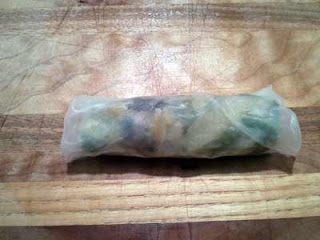Ingredients
2 lbs. Organic Red Kidney Beans
2 Large Organic Onions (diced)
2 Large Organic Bell Peppers (Red, Yellow and/or Green - diced)
5 Stalks Organic Celery (diced)
6 Organic Garlic Toes (minced)
4 to 6 Organic Bay Leaves (whole)
2 to 6 dashes of Louisiana Tabasco
Tony Chachere's Creole Seasoning
Black Pepper (to taste)
2 to 4 cups Organic White or Brown Rice
1 pack Field Roast Grain Meat Company Sausage
4 Tbs Olive Oil
1 (12 oz) can Organic Diced Tomatoes (optional)
Water
Tools
1 Large Saute Pan
1 Large Capacity Crock Pot
1 Saute Spoon
1 Chef's Knife and Cutting Board
1 Garlic Press
1 Rice Cooker or Pot for stove top cooking
Lets Talk Beans and Seasonings
The primary ingredient in Red Beans and Rice is red kidney beans. In New Orleans, most chefs can go to their local grocery store and buy a 1 or 2 lbs bag of Camellia brand red beans. For the rest of us, we can buy them online or use a different red kidney bean. Living in California, I go to my local Whole Foods Store and I purchase the organic bulk red kidney beans. I do not mention this because I am representing either company, but to simply make the point that red beans differ slightly with region. While I grew up on Camellia brand beans, the organic bulk red kidneys are the next best thing as far as my own taste buds are concerned. The main thing to know is that you want fresh organic dry red kidney beans - not canned, not cooked and not pre-soaked, sitting in liquid.
Some chefs pour their dry red kidneys into a large bowl and fill the bowl to the brim with cold water and let the beans rest overnight. This hydrates them and has been argued to speed cooking times and tenderness, as well as removing some of their gasses. While I have done this many times myself, having cooked red beans more times than I could count, I have also prepared them without soaking overnight. The results in flavor and tenderness are no different. The recipe presented here is without soaking - just pour the dry beans directly into your pot and go!
Nothing says New Orleans and Creole cooking without the proper seasonings. Most local groceries are carrying these Dixie Land favorites, but if not, they are available online. I am speaking of New Orleans Tabasco
Lastly, the preferred New Orleans method of cooking is on the stove top in a large soup pot over a gas flame. This takes a lot more attention throughout the long cooking day, as your beans will need to be stirred regularly for the 4 to 7 hours they simmer to avoid scorching.
The other method, which I will present to you in this recipe, calls for a digital crock pot
Step One: Making the Base
The first thing you want to do is dice your onion, bell peppers, celery and prepare your garlic toes for pressing. In your large saute pan, add your olive oil and bring your temperature up. Once your oil is hot, add your diced veggies and then press your garlic toes, mixing everything together. You will cook your vegetable mixture over a medium-high heat, stirring regularly. Add your fresh cracked black pepper to taste and some Tony Chachere's Creole Seasoning.
As your onions begin to become clear and the juices are releasing into the pan, add 1/2 cup of water. Mix the water in and turn up your heat to begin reducing. This is the process of cooking the water out of the pan while further expelling the liquids from your veggies. Do this process 2 times.
Step Two: Cooking the Beans
Add the dry red kidney beans to your crock pot. Just pour them right into the pot and then add cold water, covering the tops of your beans. Be sure not to fill the crock pot to the very top with water as the beans will absorb the liquid and begin to expand over the next hour. You must leave room for this expansion to occur or you will have a mess on your counter. Season your water with Louisiana Tabasco and Tony Chachere's, remembering that a little goes a long way. It's alright if your beans are a bit on the mild side once cooked as you can always season each serving to taste. Add your bay leaves next.
With your vegetables reduced, pour the mixture directly into the crock pot with the beans, water, seasoning and bay leaves and mix everything together, being careful not to break up your bay leaves as you will not eat these, but will remove them from the final dish after your beans are fully cooked.
Red Beans and Rice are made in slightly different ways depending on the region of Louisiana or the family cultural heritage. If you would like a richer, slightly more creamy dish with a deeper flavor, add a can of organic diced tomatoes at this juncture and stir together. This brings in a taste of creole.
Set your crock pot
Step Three: Bringing it All Together
In the last hour of cooking, make a pot of either white or brown rice. The classic New Orleans Red Beans and Rice is made with white short grain rice. Do not add the cooked rice to the finished pot of red beans. To serve, you will add rice to your empty bowl, then ladle your beans over the rice. Lastly add your "meat" to the dish. I use the Field Roast Grain Meat's Italian sausage
Laissez le bon temps rouler!
(Let the Good Times Roll!)
___________________________________________________
If you would like to assist in supporting my blogging and recipes, please consider making a donation towards the next meal. Healing the world's health one lentil at a time. Blessings.












































